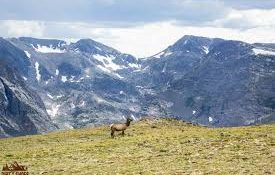CU Boulder’s Chancellor Philip P. DiStefano sent the following letter to students, faculty and staff March 11.
Dear students, faculty and staff:
The University of Colorado Boulder has faced many challenges in its nearly 150-year history. Generations of CU Boulder students, faculty and staff have worked together and supported each other. I thank you in advance for all that you have done and will do, and I ask that we show care and compassion for each other as we confront the challenges that COVID-19 poses in our community. We will get through this together.
Today, I am announcing several campus actions to help limit COVID-19 risk on our campus. We will continue to fulfill our mission by ensuring that students are able to meet their educational requirements and faculty are able to continue their research and scholarship, and the campus will remain open to allow that to occur. We will continue to operate campus facilities, including residence halls, dining halls, the University Libraries, student recreation centers, the Center for Community, Wardenburg Health Center and the University Memorial Center. But, as local, national and global public health recommendations shift to include mitigation of transmission, we are proactively taking steps to protect the campus and the community.
The campus is taking the following actions, which will be in effect until further notice.
Remote Teaching and Learning
CU Boulder has already encouraged its faculty to teach remotely. Beginning Monday, March 16, the campus will transition to remote learning for the remainder of the semester. Faculty will determine how best to use technology, such as Canvas and Zoom, to enable students to complete their educational requirements. This is consistent with what several other institutions are already doing.
Remote Work
The campus is encouraging employees to work remotely whenever possible. By Monday, March 16, supervisors should identify student workers, researchers and staff who can work remotely, meaning their work can be done partially or entirely away from campus. Supervisors should determine, in consultation with their employees, whether it is feasible for them to work remotely and, if so, the manner in which they will perform their responsibilities. As soon as a supervisor provides authorization, an employee can work remotely, recognizing that supervisors may need to evaluate campus needs and an employee’s work requirements on an ongoing basis.
Domestic and International Travel
While we previously limited international travel, effective immediately, the campus is suspending all university-funded travel–foreign or domestic. Travel sponsors can apply for exceptions to this restriction by filling out the following domestic and international travel exceptions form. The campus will grant permission when the travel serves a significant need, and the risks of travel can be mitigated.
Education Abroad
Effective immediately, the university is suspending Education Abroad-sponsored programs in the Czech Republic, France, Japan and Spain through the remainder of the spring 2020 semester. Students and their program providers are being notified. Earlier this semester, CU Boulder suspended programs to China, South Korea and Italy through summer 2020. These decisions are based on travel advisories from the U.S. Department of State, the Centers for Disease Control and Prevention and other considerations as needed. Education Abroad has created a list of Education Abroad FAQs on the coronavirus.
Events
Effective immediately, multi-day university-sponsored gatherings or those with more than 150 attendees are suspended until further guidance is issued. Event sponsors may request their events still be held and can request exemptions via the campus events exception form.
We will be providing further guidance and direction about how to implement each of these decisions in the coming days. Please continue to reference the latest information at colorado.edu/coronavirus.
The safety of our community is our top priority. We realize that our COVID-19 policy guidelines will cause disruption—and that you will have additional questions based on the above information—but the risk of not acting outweighs the inconvenience of these temporary measures.
I appreciate your patience and cooperation. We are grateful to staff for their tremendous efforts on our behalf during these challenging times, especially our front-line staff who serve in health care, custodial, food service, transportation and other areas on campus. Your work is critically important at this time, and we greatly value you and your contributions.
Philip DiStefano,
Chancellor
SPREAD THE NEWS
COMMENT, Like, Follow & SHARE @I70Scout
CURRENT EDITION
WEATHER & TRAFFIC PUZZLES RECENT NEWS ADVERTISE WITH US




